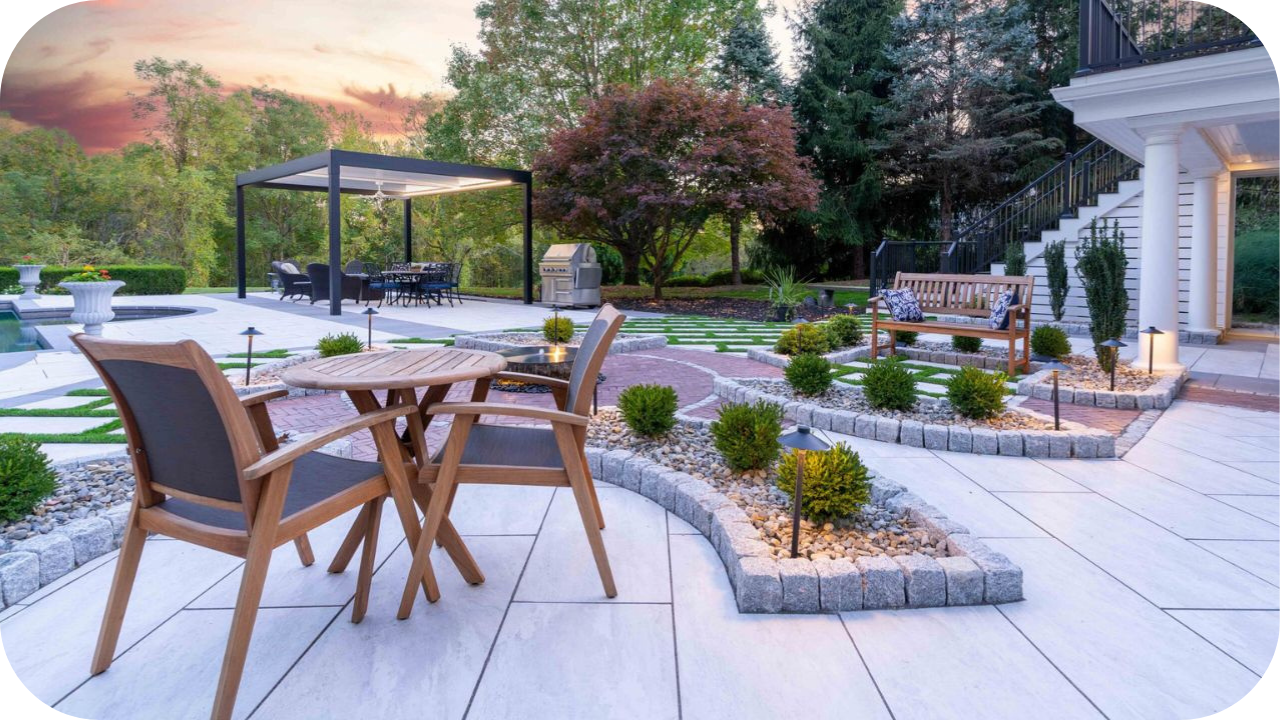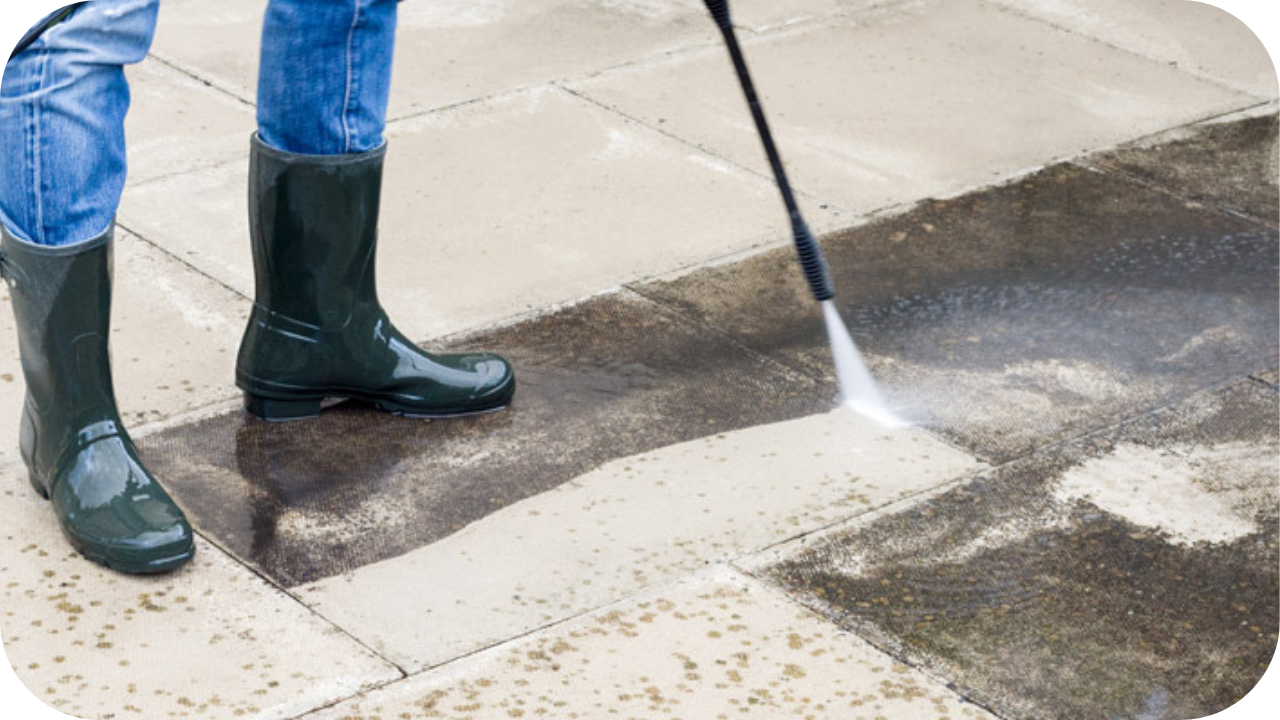
Quartzite is a dense, natural metamorphic rock formed when pure sandstone is subjected to intense heat and pressure deep within the Earth.
This transformation fuses the stone into a hard, crystalline material with remarkable strength and natural shimmer. With colour variations ranging from white and grey to rose and gold, quartzite offers both durability and visual elegance.
In Australian design, it’s commonly used for paving, wall cladding, and other architectural features that demand performance, longevity, and a premium finish.
What Is Quartzite?
Quartzite is a natural metamorphic rock formed from sandstone that undergoes intense heat and pressure over time. This process results in an extremely hard, crystalline stone that’s resistant to weathering and wear. Known for its marble-like beauty and strength, quartzite is ideal for outdoor paving, walling, and architectural applications that require both durability and elegance.
Key Characteristics of Quartzite
Quartzite is defined by its natural strength, crystal-rich texture, and unique formation. Below are the core physical traits that make this metamorphic stone distinct in both structure and visual appearance.
1. High Mineral Hardness
Formed under extreme pressure, quartzite has a tightly bonded structure. It ranks at 7 on the Mohs scale, meaning it resists surface wear and retains sharp, clean edges over long periods.
2. Crystalline Surface Texture
Quartzite’s surface features interlocking crystals that catch and reflect light. This crystalline pattern is a direct result of intense metamorphism and gives the stone its sparkling, glassy appearance when exposed.
3. Natural Colour Variation
Quartzite occurs in a wide spectrum of colours such as white, beige, grey, rose, and gold. Its hues often feature subtle veining, adding movement and natural depth without artificial treatment.
4. Low Water Absorption
Quartzite is naturally dense with low porosity. This makes it less susceptible to water intake in its raw form, helping preserve its appearance when used in areas with moisture or humidity.
5. UV Stability
Quartzite holds its colour and texture under prolonged sun exposure. Its mineral makeup prevents fading and surface deterioration, making it reliable in high-exposure environments with strong ultraviolet light.
Quartzite Finishes: Surface Styles with a Luxurious Feel
Quartzite is available in a range of surface treatments, each highlighting its crystalline texture differently. These finishes allow you to tailor the look and feel of your project with precision and style.
1. Natural Split
This finish retains the raw texture and natural clefts of quartzite, giving a rustic and earthy appearance. It’s especially popular in outdoor cladding projects and pairs well with varieties like Sierra Quartzite.
2. Honed
With a smooth, matte surface, honed quartzite softens the stone’s natural sparkle for a subtle, refined appearance. Euro Quartzite is ideal for interiors, especially in minimalist or contemporary settings that favour understated elegance.
3. Brushed
Brushed quartzite features a lightly textured surface with a gentle sheen. It offers a natural feel that complements coastal designs, particularly when using soft-toned varieties like Arctic Quartzite.
4. Polished
Polished quartzite reveals the stone’s crystalline clarity and intricate veining. This high-shine finish works best on walls or low-traffic areas, adding glamour and depth without compromising the natural character of the stone.
5. Flamed
This surface is created by exposing the quartzite to high heat, producing a coarse, slip-resistant texture. Andorra Quartzite is especially striking in a flamed finish around pool coping, patios, or outdoor walkways.
Where Quartzite Works Best in and Around Your Home
Quartzite isn’t just visually appealing; it performs across a wide range of settings. From outdoor paving to stylish interiors, here’s how this premium stone fits into Australian homes and landscapes.
1. Outdoor Paving
Quartzite’s strength and resistance to weathering make it ideal for patios, garden paths, and courtyards. It easily handles heavy foot traffic, offering long-lasting visual appeal in residential and commercial landscaping projects.
2. Wall Cladding
Quartzite cladding creates striking façades and feature walls. Its crystalline texture beautifully catches natural light, adding depth and brilliance to both indoor and outdoor spaces while complementing a wide range of architectural styles.
3. Pool Surrounds and Stepping Stones
Quartzite’s heat resistance and dense structure make it ideal for pool coping, surrounds, and steppers. It stays cool underfoot while adding texture, durability, and natural beauty to water-adjacent outdoor spaces.
4. Interior Flooring
With its marble-like appearance and toughness, quartzite elevates interior spaces such as hallways, kitchens, and open-plan living areas. It blends strength with elegance for flooring that’s visually impactful and made to last.
5. Kitchen Splashbacks and Feature Surfaces
Used selectively indoors, quartzite works well for splashbacks and vertical surfaces. Its unique veining and sparkle offer a sophisticated alternative to more common materials, especially when subtle elegance is the goal.
Why Choose Quartzite for Your Design Project
Quartzite offers durability, sophistication, and premium performance across applications. That’s why it remains a go-to material for architects and homeowners who want strength and style in their surfaces.
1. Delivers Exceptional Hardness and Longevity
Quartzite’s dense mineral composition makes it incredibly tough. It resists chips, scratches, and pressure, making it a long-term solution for areas that see frequent use, heavy foot traffic, or shifting weather conditions.
2. Adds Visual Luxury with Natural Sparkle
With its crystalline sheen and soft veining, quartzite brings visual depth to spaces. It’s a high-end material that mimics marble while offering superior strength, making it ideal for elegant yet durable design.
3. Performs Well in Harsh Australian Conditions
Quartzite handles heat, UV exposure, and seasonal changes without losing its structural integrity or colour. It’s suited for outdoor applications where durability and appearance must withstand Australia’s challenging climate.
4. Supports Low-Maintenance Living
Once sealed, quartzite is easy to maintain. It resists staining and doesn’t require frequent upkeep, making it practical for busy households or commercial settings where time-efficient care is essential.
5. Elevates Both Modern and Classic Designs
Quartzite’s neutral tones and polished surfaces pair well with minimalist, coastal, or traditional themes. Its versatility allows it to blend with other materials while adding an unmistakably refined and grounded presence.
Maintenance and Care for Quartzite
Quartzite performs best with the right care. These simple steps help protect its beauty and extend its lifespan:
- Seal on installation: Apply a penetrating natural stone sealer to reduce moisture absorption and guard against stains. This is essential for outdoor paving and busy interior zones.
- Clean with pH-neutral products: Avoid acidic or abrasive cleaners. Instead, use a pH-balanced stone cleaner or mild soap and water to preserve the finish and avoid etching.
- Re-seal as needed: Reapply sealer every 3–5 years based on use and exposure. Check for water absorption to determine if a new coat is needed.
- Sweep and rinse regularly: Remove debris and grime with a soft broom and water. Regular upkeep maintains the stone’s clarity and prevents long-term buildup.
- Wipe spills promptly: Address oil-based or coloured spills immediately. Even sealed quartzite can absorb stains if liquids are left to sit too long.
- Inspect and maintain edges: Occasionally check for chips or scratches. If found, consult a stone care specialist to repair without compromising appearance.
- Protect indoor floors: Use rugs or mats in high-traffic areas to reduce wear, catch dirt, and keep surfaces looking fresh for longer.
Conclusion
Quartzite combines stunning natural beauty with long-lasting strength, making it ideal for both indoor and outdoor applications. Its crystalline texture, durability, and low maintenance needs make it a premium choice.
For expert advice or to choose the perfect quartzite finish for your space, speak with the specialists at Splendour in Stone and bring lasting elegance to your next project.
More To Explore

Natural Stone Materials: Types, Benefits, and Choosing the Right Stone for Your Project
Natural stone is widely used in Australian homes because it offers lasting beauty, strength, and natural character in both indoor and outdoor spaces. Its variation

How to Maintain Limestone Pavers for Long Term Surface Quality
Limestone is a favourite choice for Australian outdoor spaces because its soft texture and natural warmth bring a relaxed, timeless feel to patios, pathways, and


